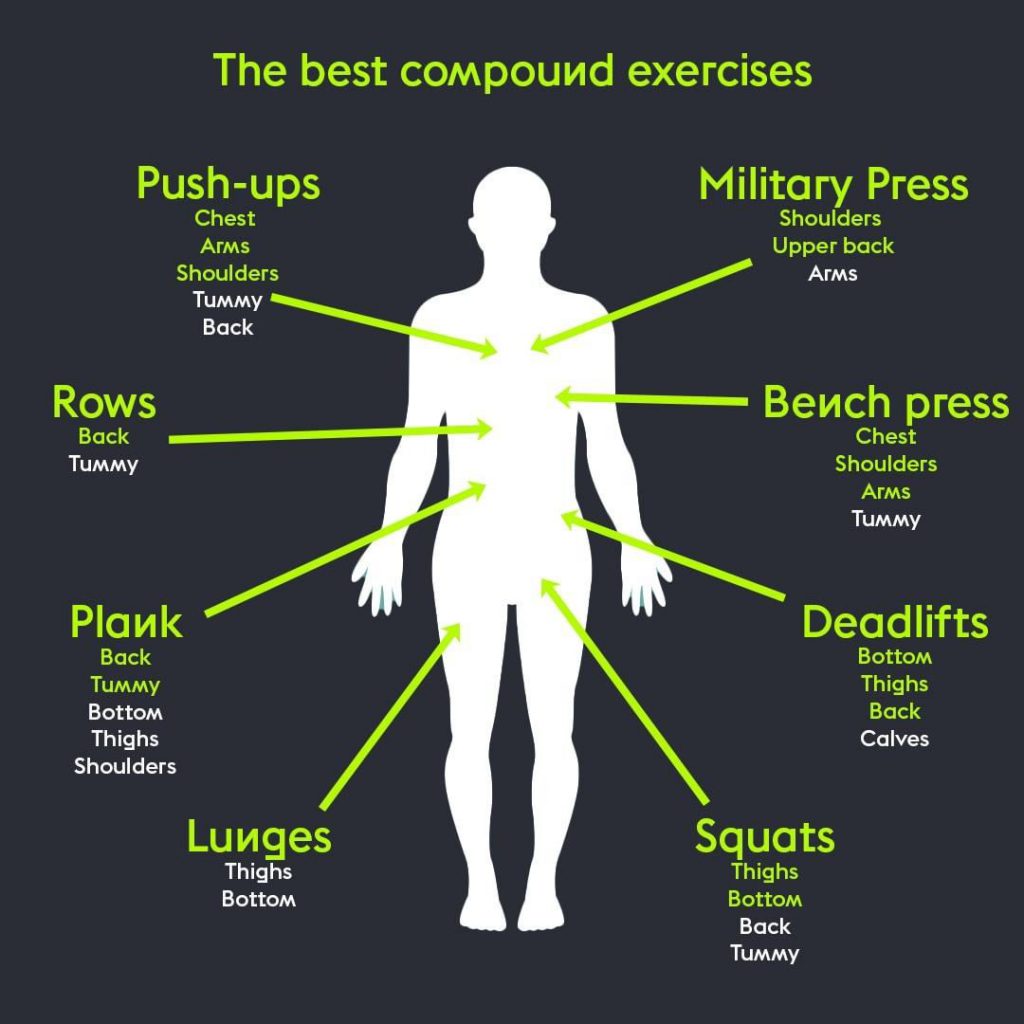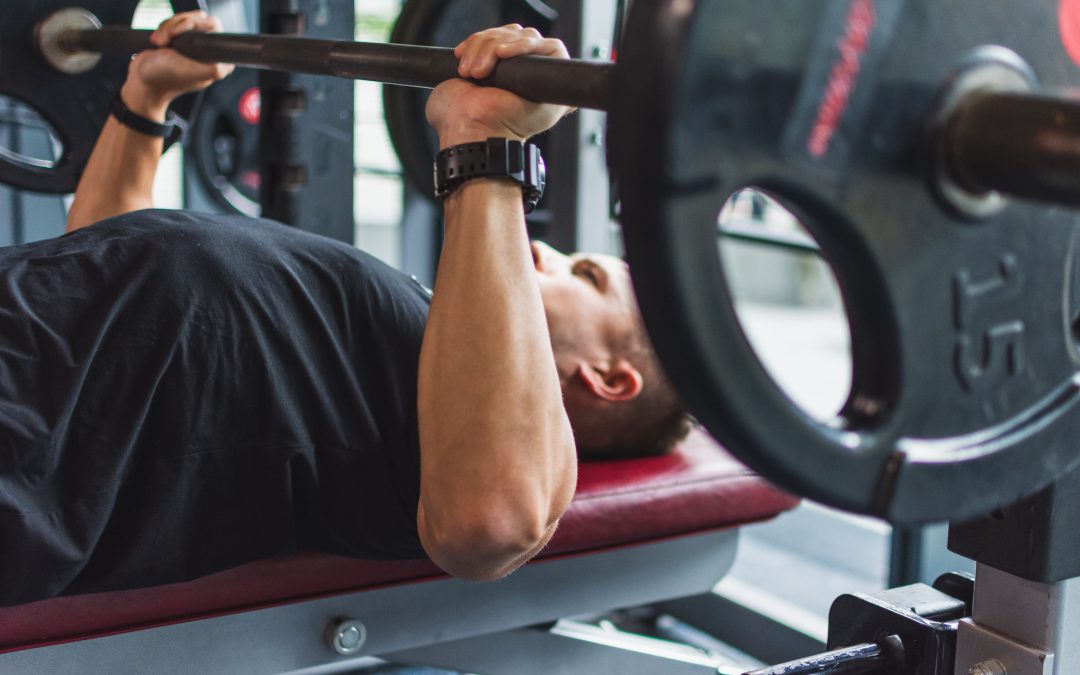Roughly speaking, the body is arranged into opposing muscle groups. They’re also often referred to as antagonistic muscle groups or antagonist pairs.
Because most movements have two phases to them, opposing muscle groups work together to perform both phases.
When it comes to exercise, it’s vital to develop well-rounded and balanced strength in both groups to progress with fitness and remain injury-free.
Are you an employer? Hussle now offer flexible, discounted access to our fitness venues as an employee benefit. Elevate employee wellbeing.
What are the main opposing muscles?
The main groups that we commonly hear about are:
Biceps and Triceps
(either side of the upper arm)
Quadriceps and Hamstrings
(either side of the upper leg)
Deltoids and Latissimus Dorsi
(shoulders and upper back)
Pectoralis Major and Trapezius/Rhomboids
(upper chest and upper back)
Abdominals and Erector Spinae
(stomach and lower back)
Iliopsoas and Gluteus Maximus
(front and back of the hip)
Hip Adductor and Gluteus Medius
(inside and outside of the hip)
How do opposing muscles work?
In the majority of gym exercise, there’s a primary mover. It’s also called the agonist. That’s the muscle you’re trying to target by doing the exercise. It contracts to successfully perform the movement. To allow it to do so, the antagonist, its opposing muscle, must relax.
It’s important to note that this isn’t always the case. Both muscles in an antagonist pair can contract simultaneously to perform an exercise in a few instances.
Should you train opposing muscle groups together?
If you’re well into your fitness journey and are looking to give a particular area some real focus, you might have started to do more focused exercises. And you might want to make your training more efficient.
Many fitness routines acknowledge that the body can be split into opposing muscle groups.
The push/pull workout structure is a popular example of this. It allows you split your workouts by antagonist pairs, giving you the ability to plan your rest days more effectively and achieve a balanced workout.
Agonist supersets attempt to target the same primary mover with two different exercises back to back. Antagonist supersets aim to target opposing muscles with two different exercises back to back.
It’s not necessary to train your opposing groups on the same day or on different days. It depends on what you prefer and what works for your workout routine.
It is important not to train just one muscle group and neglect its antagonist. By strengthening just one of a pair of opposing muscles in isolation repeatedly, the other tends to lengthen and weaken. You should also work muscle groups from across the body and keep them all strong. Any type of imbalance can cause injury, so keeping strength balanced is important for the body.
How do you know if you’re developing muscle imbalances?
Don’t panic. Unless you’re a professional bodybuilder or live in the gym, you don’t need to keep a detailed log of how many reps you’ve done of each exercise and which exact muscles you’ve been training.
Most of the major compound lifts you find yourself doing in the gym will see you work a mixture of muscles. Squats, deadlifts, and lunges all target the quads, glutes and hamstrings.
The upper body is where it’s worth thinking about this a little more. The chest press or bench press is a popular lift lots of people try to progress with. Just make sure to balance it out with some back work as well.
If you do lots of isolated exercises, which means exercises that move just one joint at a time, you might need to think a little more about opposing pairs. Chest flys, bicep curls, hamstring curls and calf raises can be labelled as isolation exercises. They aim to target a single muscle more. That means, if you do them too often, without paying attention to other muscles, you could end up with an imbalance.
But you don’t need to overthink it too much. Just being aware of the opposing muscle groups and having a varied range of compound exercises up our sleeve can be enough to make sure we’re giving ourselves a balanced workout.

What are some opposing muscle group exercises you can do?
Having a go at some opposing muscle group exercises helps with your understanding of which exercises do what.
So, here’s a rundown of a workout that targets each opposing pair to offer a full-body, balanced workout.
Biceps and Triceps:
Biceps: Bicep curls
Triceps: Tricep extensions
Both: Push-ups
Quadriceps and Hamstrings:
Quadriceps: Leg extensions
Hamstrings: Lying leg curls
Both: Squats
Deltoids and Latissimus Dorsi:
Deltoids: Shoulder press
Latissimus Dorsi: Dumbbell pullover
Pectoralis Major and Trapezius/Rhomboids:
Pecs: Chest press
Traps: Bent-over row
Abdominals and Erector Spinae:
Abs: Sit-ups
Erector Spinae: Back extensions
Both: Plank
So, what’s the verdict? Should you be working opposing muscle groups?
Isolating muscles can be a helpful way to address pre-existing muscle imbalances. But they can also cause them in the first place if we spend too much time strengthening one muscle without considering its counterpart.
Working opposing muscle groups is only simple for a handful of groups, and after that, it can get pretty complex.
The more efficient way to work out and make sure all your muscle groups are strong and balanced is by keeping key compound exercises at the core of your regular routine.
A little knowledge of opposing muscle groups can help you top up and guide your efforts safely and equally. But don’t let it keep you up at night.
Keep your focus on frequency, variety, and flexibility. Oh, and use Hussle to make all that easier. Unlimited, multi-gym access all across the UK. And digital fitness classes. All with one flexible fitness pass.



